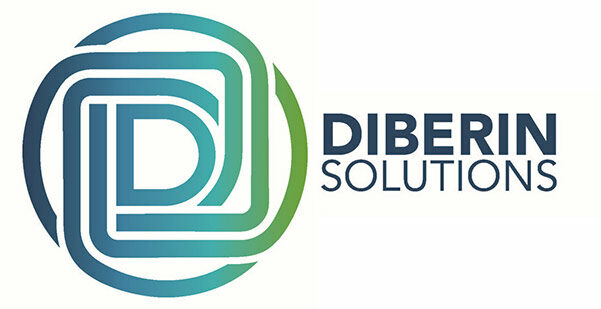Positioning is “the art and science of fitting the product or service to one or more segments of the broad market in such a way as to set it meaningfully apart from competition,” writes Al Reis and Jack Trout in their book, Positioning: The Battle for Your Mind.
To put it more simply, however, think of positioning as a statement; a few sentences that define the problem you’re attempting to solve and why your solution is better than any other solution. While a positioning statement is generally internal, it serves as a guideline for everything you do thereafter, such as developing the best product, communicating your value, onboarding the right team, and so on.
Understanding the Framework for Successful Positioning
Before you can successfully position yourself, you’ll need to do your homework. After all, it has been said that new product failure rates come dangerously close to 50%. “About half of all resources allocated to product development and commercialization in the US goes to products that a firm cancels or produce an inadequate financial return,” says Robert G. Cooper in Winning at New Products.
There are seven main reasons new products never take off:
- Failure to understand consumer needs and wants
- Fixing a non-existent problem
- Targeting the wrong market
- Pricing the product incorrectly
- Employing a weak team and internal capabilities
- Delaying market entry for too long
- Poor overall execution
You can read more about these failure factors in this UserVoice blog. In the meantime, to ensure you don’t become one of those statistics, it’s important to consider the following when developing a positioning statement:
The customer
Before you can sell, you need to know who you’re selling to. While this may seem obvious, many startups fail to consider things such as whether they should be targeting manufacturers or end-users, and more.
The market
It’s important to understand whether there truly is a need for a product or service; caught up in the excitement of launching a new product, some startups release it without the proper research and product testing, only to find out that no one wants or needs the product after all (or that no one wants this version of the product; product testing may have revealed that with a few design tweaks, it could have been better received).
The competitive landscape
Are the customers you’re going after already well-served by competitors? If so, entry into the market will be difficult unless you have a value proposition that makes your offering much more appealing (more on value props in a minute).
Once you’ve done this, you should be able to state with confidence who you will be selling to (customers and market segments) and why they will buy from you and not your competitors (the value proposition).
Identifying a Sustainable Value Proposition
When determining your competitive advantage, you need to be sure that it’s a sustainable one. After all, most markets are highly competitive, and it won’t be long before someone with a similar product is nipping at your heels. Formulating a sustainable value proposition, sometimes called a unique selling proposition or USP, also helps set you apart from other “me too” businesses—those that jump into the game without a clear focus, only to quickly disappear.
There are five types of sustainable value propositions (or, competitive advantages) that all startups should consider, which all fall under the umbrella of product differentiation.
- Cost advantage. This involves competing on price (and, as a low-cost provider, potentially keeping others out of the market). To enter the market this way, a company will generally have to have economies of scale and efficient operations.
- Quality advantage. The company or product is able to distinguish itself by offering a superior quality product or service (or at least, the perception of such).
- Laser-sharp focus. The company knows its niche and designs a product or service that specifically meets the needs of a particular unserved market segment.
- Strategic assets. Scooping up patents, trademarks, domain names, and other intellectual property rights can keep others from wading into the product pool.
- Adaptive product. Over time, products must evolve, or they’ll go the way of the dinosaur. A product that can be improved over time, or that has complementary products for purchase, can keep customers coming back time and again.
Using a sustainable value proposition in your sales and marketing efforts lets customers know why they should turn to you instead of the competition, time and time again, which in turn builds brand loyalty.
Developing a Unique and High-Impact Positioning Statement
So what does a positioning statement look like? While all brands may have variations on the tried-and-true brand positioning formula, it should be something like this:

To fill in these blanks, here is what you must consider:
- Your target audience. Who is the consumer target? What are their pain points?
- Your market. What is your market category? What is the frame of reference that helps to define the space in the marketplace that you want to compete in?
- Your brand benefit. What puts your brand on top? What is the biggest promise you will make to the consumer?
- Your supporting points. What evidence can you offer to show that backs up the main brand benefit?
Nike is one brand that follows this basic positioning statement structure (you can see other great examples here).
For athletes in need of high-quality, fashionable athletic wear, Nike provides customers with top-performing sports apparel and shoes made of the highest quality materials. Its products are the most advanced in the athletic apparel industry because of Nike’s commitment to innovation and investment in the latest technologies.
Need Help with Positioning Your Medical Innovation?
“A brand strategy can enable, sometimes crucially, the potential of an innovation to be realized. There are times when you literally need to brand it or lose it.” Those are the wise words of marketing expert David A. Aaker. A positioning statement, along with product differentiation, plays a major role in brand strategy. This is especially true in the medical device field, where technologies are constantly evolving and companies are always trying to one-up each other.
At Diberin Solutions, our goal is to make sure medical device startups entering the industry succeed. We help you reach your full potential and avoid common mistakes, and of course, work with you to determine the best path forward based upon your positioning. We’ve helped startup companies like BandGrip, HomeThrive, and others get off the ground, and we want to help you. Contact us today to learn more.
